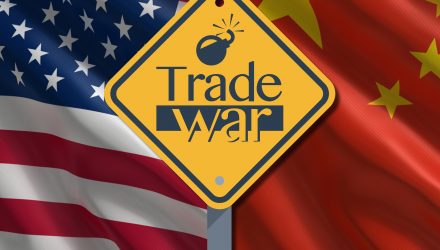The contribution of foreign-invested enterprises to China’s export ascendancy is nothing short of staggering. From 1985 through 2017, aggregate exports of foreign-invested enterprises grew from about 1% of China’s total exports to more than 40%. And the share of exports to the U.S. coming from foreign-invested enterprises in China is even larger, estimated to be 60%.3 Because of this surge, “Made in China” does not mean what most people think. Thousands of low-cost Chinese firms are not flooding the U.S. market with goods, displacing U.S. workers in the process. Rather, foreign firms are increasingly leveraging low-cost China to their competitive advantage.
Take the iPhone, for example. While final assembly of the iPhone X by contract manufacturers occurs in China, the parts are sourced from a wide range of suppliers around the world. Touchscreens from Japan, memory chips from South Korea and Japan, and other components from the U.S., Europe and Taiwan make up the bulk of the component costs, while the final assembly done in China represents just 3% to 6% of the total manufacturing cost. With total materials costing $370 versus a $999 price tag for consumers, the bulk of the profits flow to Apple, yet the product—and many others like it— bear the familiar “Made in China” logo and shipments to U.S. consumers count as Chinese exports to America.4
Fifth, the U.S. trade deficit with China is a dangerous scorecard.
Much has been made of China’s trade surplus in goods with the U.S., which topped $375 billion in 2017. That’s a large figure, to be sure, but it does not accurately reflect the true nature of bilateral commerce between the two nations. Local sales of goods and services by U.S. foreign affiliates operating in China are missing from the equation. These sales totaled $307 billion by our estimates—well above the U.S. exports of goods and services to China ($188 billion) in the same year. In 2017, U.S. goods exports were $130 billion. In terms of trade in services, the U.S. actually posted a trade surplus with China, with exports of $58 billion and imports of $17 billion, according to Bureau of Economic Analysis.
Against this backdrop, the trade figures alone—the favorite benchmark of global commerce— underreport and misrepresent the true balance of commerce between the U.S. and China. The primary means by which U.S. firms deliver goods and services to China is missing from the debate. China does sell more to the U.S., but not by the lopsided margin some might suppose.
Sixth, capital remains China’s top export to the United States.
While the mainland’s exports to the United States run the gamut from Barbie dolls to footwear to computers, China’s most important export to the United States may be capital. Or more to the point: U.S. dollars.
Lost on many legislators in Washington is this simple yet critical fact: China not only provides U.S. consumers with low-cost, high-quality goods, it also provides the capital to purchase such goods by recycling greenbacks earned from trade back into U.S. Treasuries and other dollar-denominated assets. China remains the largest holder of U.S. Treasury securities, holding some $1.2 trillion as of June 2018.5 Should the United States opt to escalate its trade conflict with China, it may be cutting off a key source of foreign capital— something the world’s largest debtor nation can hardly afford.
Finally, the mainland remains an unlikely source of U.S. profits.
The lopsided nature of U.S.-Sino trade gives the impression that all the benefits go to the Chinese. We believe that is simply not true. One of the best-kept secrets on Wall Street is that U.S. firms are making tidy sums of money in the Middle Kingdom.
Data on foreign affiliate income from the BEA corroborate these findings. U.S. foreign affiliate income in China rose from $1.2 billion in 2000 to $13.4 billion in 2017. Affiliate income jumped 11% from the year before. China is among the most profitable emerging markets in the world for U.S. companies. Add U.S. affiliate income earned in Hong Kong, and the total is double the earnings of U.S. affiliates in Germany and France, combined.
The bottom line: These many strategic linkages between the U.S. and China require close attention on the part of investors. While some may associate China’s large and growing trade surplus in goods with the U.S. as a key competitive advantage for China, there are several other modes through which global companies reach consumers, including sales abroad by their foreign affiliates. What’s more, U.S. multinationals’ operations abroad are diverse, with China representing a small share of corporate America’s outward direct investment. These factors underscore the dynamism and competitiveness of U.S. companies and may help explain the resilience of U.S. large cap stocks despite ratcheting trade tensions between the U.S. and China.
For more trends in fixed income, visit the Advisor Solutions Channel.
